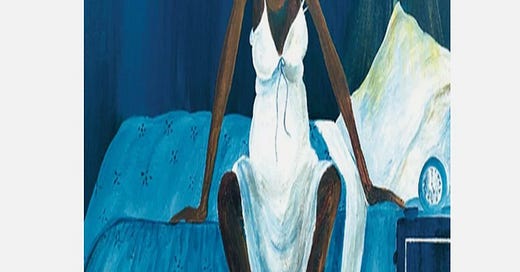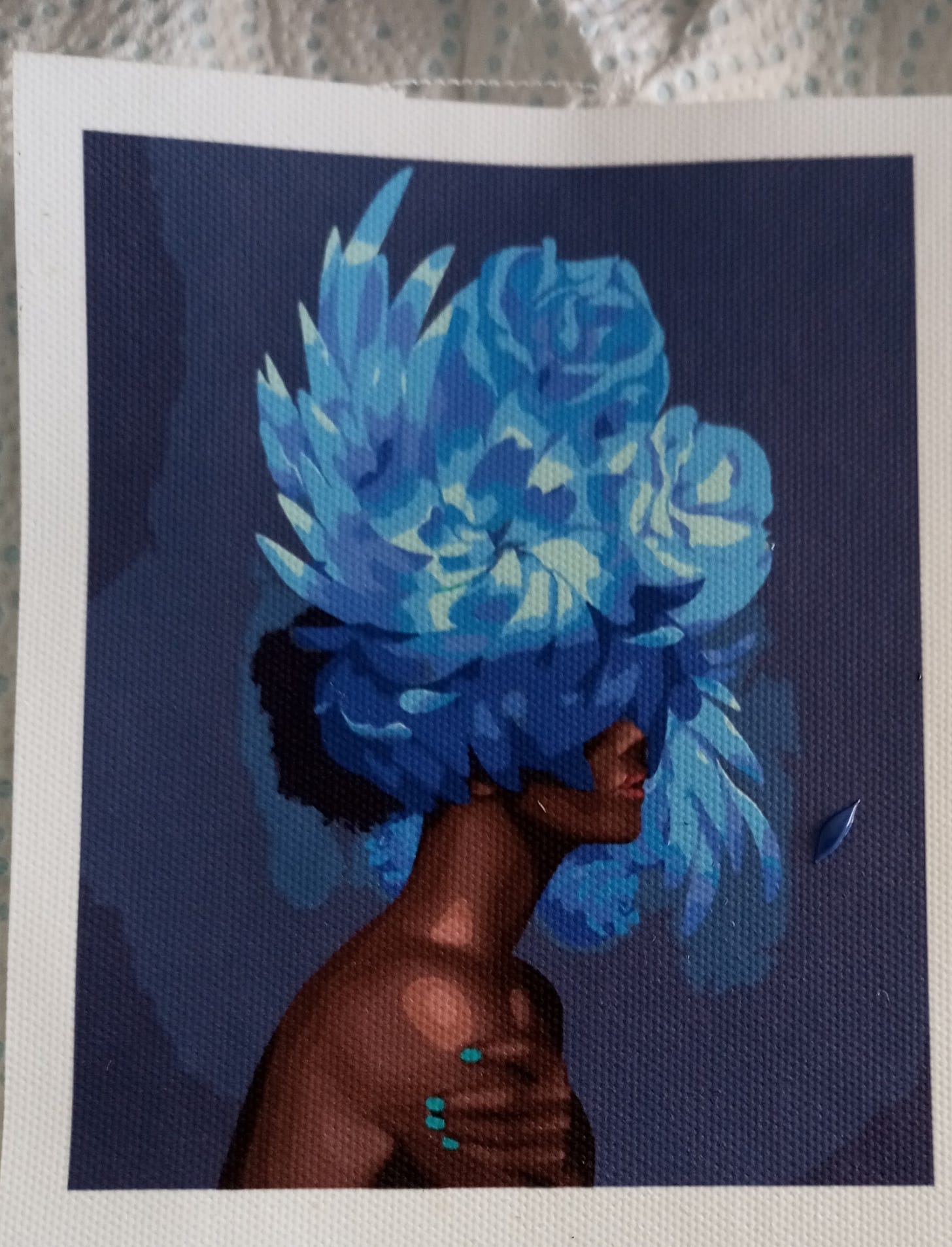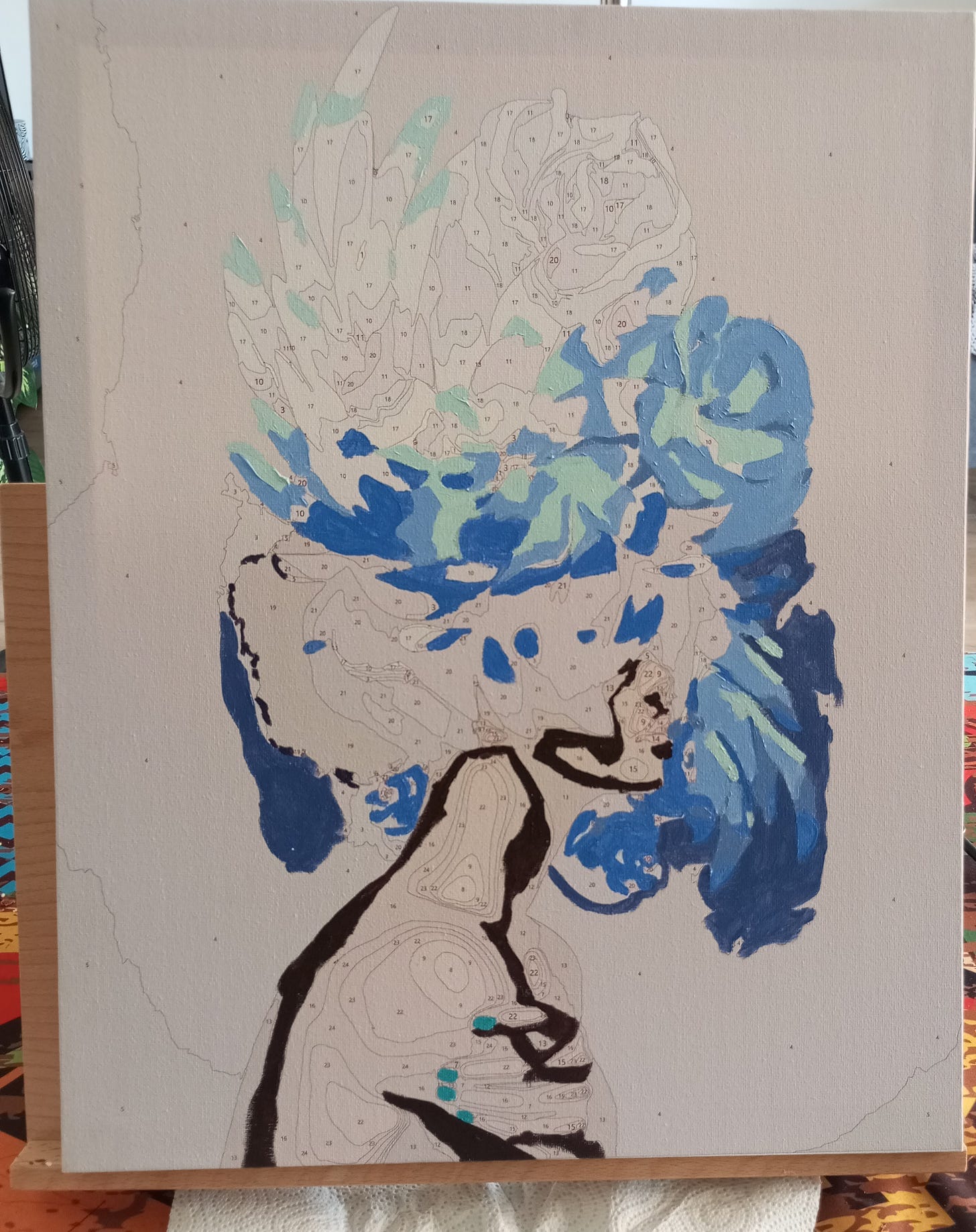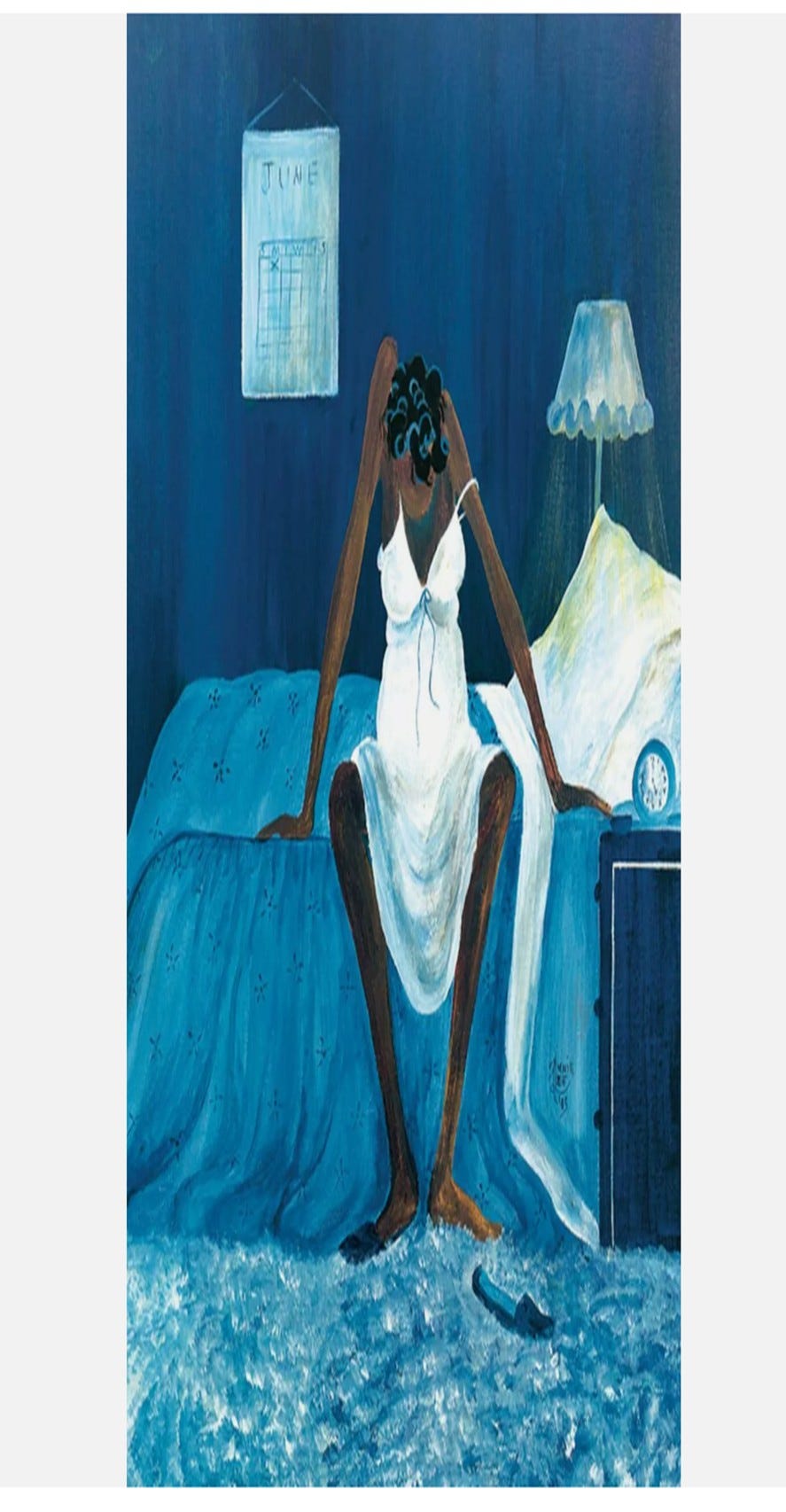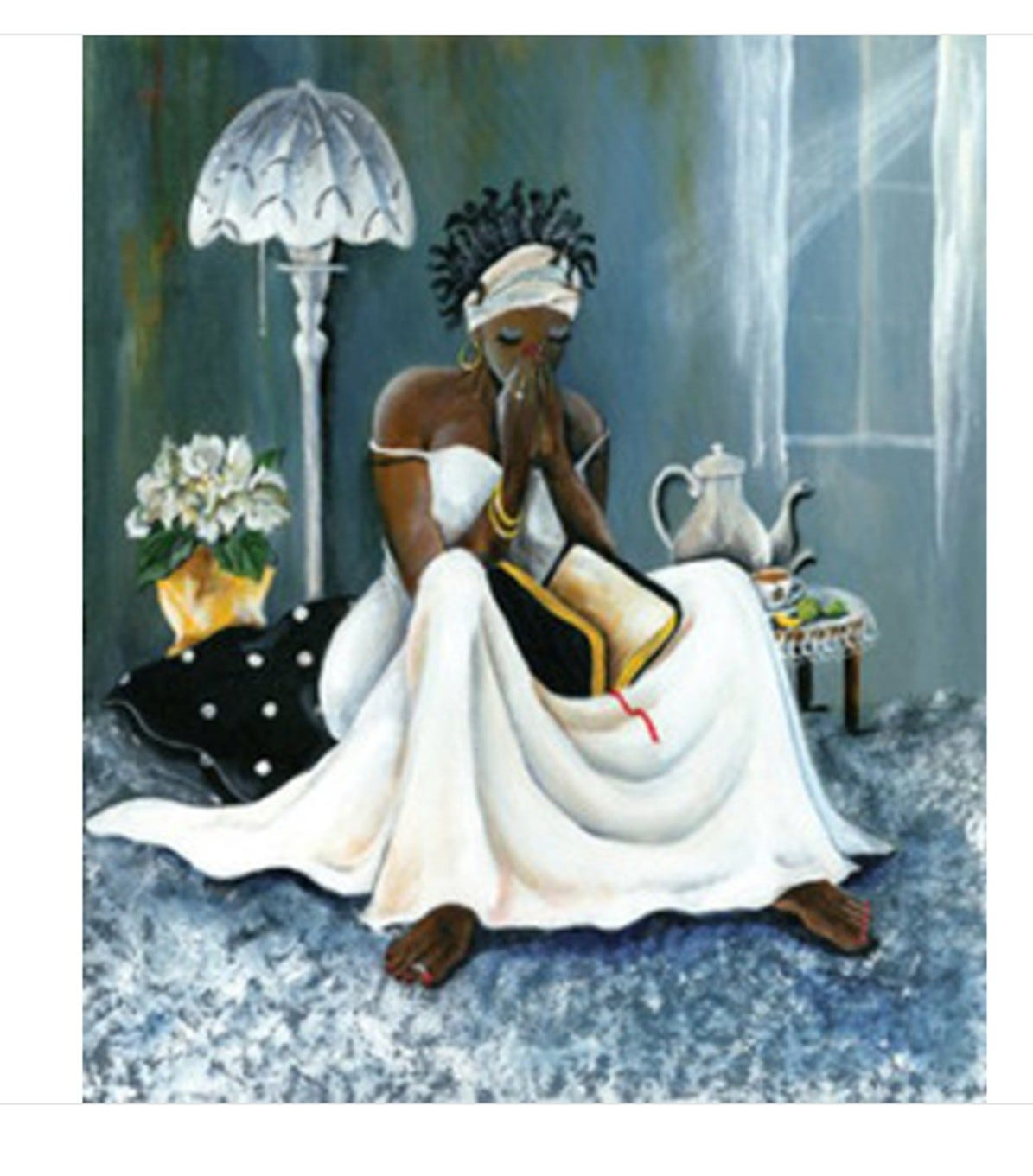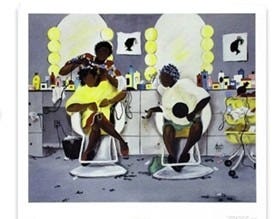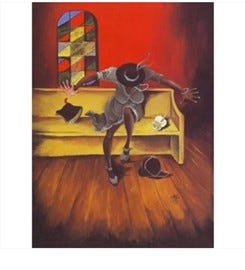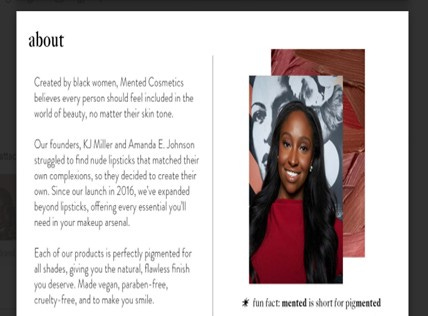Annie Lee and "Blue Monday": The Soul of Black Womanhood
Here's to another week, ladies
It was about 2:00a.m on a Saturday night, the summer solstice to be exact, inside my home even with the backdoor and windows open and the fans on it was still at least thirty degrees. I couldn’t sleep, the house was silent, the low hum of snoring was in the background— it was just me and the mosquitos for “company.”
I pulled out one of my canvases and started working on a piece of artwork of a Black lady with her face obscured by blue florals. I love art, it’s such an important thing to me, not just the art of writing but the art of painting, watercolour and inks to create urban building sketches and botanical arts are my preferences.
That night I was using acrylics on an easy paint by numbers project I bought off Instagram. As I worked on the different hues of blue, ( you can see my progress below and what the final piece will look like), what came to mind was Annie Lee the Black woman artist who captured Black womanhood in her art, in particular her most famous piece Blue Monday. For sure, she had to become the latest addition to the Encyclopaedia of Black Women on Notes on Black Women.
The Soul of Black Womanhood
Annie Lee ( 3rd of March 1935– 24th of November 2014) was an African -American artist known for her vibrant, expressive paintings that captured everyday Black life in America. Most critics say she used warmth, humour, and deep cultural insight. She was born in Gadsden, Alabama, and raised in Chicago.
Like a lot of women especially Black women with womanhood experiences similar to Annie’s – responsibility, work, and navigating an anti-Black and anti-Female society, Annie didn’t self-actualise and follow her path to be an artist until her forties —this itself offers powerful lessons in perseverance for us and highlights the nonlinear paths that creative Black women often walk— myself included.
What’s So Great About Annie’s Work?
As an artist she stood out and differentiated herself by creating a signature stylistic choice: her figures rarely had full facial features. Personally, I do enjoy this about her art, instead, she used body language, posture, and colour to communicate emotion and messages. The result we could say when we look at Annie’s work is that her subjects feel similar yet familiar to anyone who could understand and share the cultural nuances she invoked in her work—from church hats, to kitchen table conversations, to Monday mornings filled with exhaustion…. And the blues!
Though she always loved painting, Annie delayed her artistic ambitions, after high school, she married young and worked full-time to support her family. She eventually earned a master’s degree from Loyola University and studied at the Art Institute of Chicago. It wasn’t until a tragic personal moment—the death of her second husband—that Annie took the leap to become a professional artist in her forties.
The Story Behind Blue Monday – Why the Art Resonates
I must confess, as I was creating my artwork using blue hues and thinking about how to research and write about Annie, I had an urge at 2:00a.m to get my hands on Annie’s artwork Blue Monday, to display on the wall in my office, alongside pictures of Alice Walker, Zora Neale Hurston, and Toni Morrison. A simple Google search will throw up many places that sell re-prints, The Black Art Deport could be a good option if you’re in the USA, if you’re in Europe with me then Etsy has many sellers.
Blue Monday is Annie’s most iconic painting, a piece that resonates deeply with many Black women. Using simple scenery and different hues of Blue, she created a Black woman slumped over the edge of her bed, dressed in a white slip, with her head down, in a position that invokes the viewer’s imagination and feelings. The woman is clearly mustering the energy to get out of bed, she is exhausted, obviously facing the dread of another week, likely after a weekend of chores, responsibilities, and very little rest. Despite its simplicity, the image is rich with emotional resonance, especially for us.
Annie once explained that Blue Monday was a self- portrait and inspired by her own feelings of fatigue, when she worked as a corporate executive, ( who can relate to that?!) The image is instantly familiar to anyone who has ever dragged themselves out of bed after a busy weekend, maybe tending to family or friend’s needs, plus finding time for ourselves.
Blue Monday is not just about being tired; it’s about the emotional and physical cost of constantly showing up ( normally for others), even when there’s little left to give. It speaks to the sometimes invisible labour of Black women, who are often expected to keep going no matter what.
Art as Our Mirror: Capturing Black Womanhood
Annie’s paintings were so honest! Some funny, and some deeply moving. They documented everything from beauty salons, Sunday services, and jazz clubs, to intimate domestic moments. In works like My Cup Runneth Over and Holy Spirit, Annie showed and celebrated Black culture not as spectacle but as sacredness to us.
Annie carved out a space that was distinctly hers—particularly in how she centred Black women’s inner lives, without performance to suit anyone else but us, from looking at her work to me it’s clear that it was created with us in mind as only we would understand it.
Her work has been featured in galleries and collections across the U.S. and prints of her most beloved paintings are still widely collected and cherished.
Blue Monday is arguably one of the most reproduced pieces of Black art in Black homes—its message of exhaustion and resilience continues to echo decades after she painted it in around 1985.
That said, what is good for me to notice as a Black European woman looking across the water, is that Black women seem to be resting as resistance to what’s happening around them, especially in the USA. I have seen many reaction videos on YouTube with other demographics of society “big mad” because Black American women are not showing up to protests, or lifting a finger to fend for anyone else— good for them!
What Black Women Around the World Can Learn from Annie Lee
1. It’s Never Too Late
Annie Lee didn’t begin her art career until she was in her forties. Her story disrupts the myth that success has an age limit. Your creative life is not over—at any age. Her journey reminds us that starting late doesn’t mean arriving small. The important thing is that you get started.
2. Tell Your Own Stories
Annie’s work was deeply personal and culturally specific. She didn’t paint for approval—she painted what she knew. Black women across the globe can take inspiration from her confidence in centring her own community. She didn’t seek to translate Blackness for others—she invited people to enter its world on her terms. This is one of the major reasons I started Notes on Black women.
3. Rest Is Revolutionary
Blue Monday is a visual caption and reminder to Black women throughout the African diaspora about the cost of not resting. Black women are often the backbones of families, communities, and movements—but Annie’s work gently reminds us that even the strongest woman must rest. In a society that praises productivity, her art gives permission to pause. Pause, Sis, just pause! Not only that other groups of people who have historically depended on our support, advocacy, and showing up will put more respect on our name when they see that our support is now based on conditions, that condition – reciprocity !
4. Your Work Can Be a Legacy
Even if the world doesn’t recognise your gifts immediately, your work matters. Annie Lee’s art lives on not only in galleries, but in the hearts and homes of people who see themselves in it. Legacy isn’t just about fame—it’s about impact.
Annie Lee painted Black women as we are: beautiful women, yet tired, still joyful, always resilient, trendsetters and stylish, spiritual, and full of grace. Her most famous painting, Blue Monday, has become a global reality for many of us. In it, many Black women see themselves not in despair, but as recognised. She captured what it means to carry a load and still get up on Monday morning.
For Black women everywhere—whether in Johannesburg, Atlanta, Paris, Millan, London, or Lagos—Annie Lee’s legacy is a testament to the power of telling our stories, claiming our rest, and honouring our truth in full colour. What a great artist she was, I can’t wait until my print arrives to display on my wall.
This Week: Rest, Reflect, and Rise
In my interpretation of her art, I feel that partly Annie painted Blue Monday not just to show our reality, also as a moment of pause—a reminder that even when we’re snowed under, we are worthy of self- care, creativity, and expression.
This week, take inspiration from her art:
Pause: Give yourself permission to rest without guilt. Whether it's five minutes or five hours, your rest is priority.
Reflect: Think about what you have to say and share with the world, how will you share it?—your voice matters.
Rise: Don’t wait for the perfect moment to begin your dream. Start where you are, with what you have, and trust that it’s enough at this point, then start this week! Or whenever you read or hear this.
Much love
The Black Woman Essayist
xoxo
Ps. You can join me on YouTube here
Pps… have you tried Mented Cosmetic’s make up range? A Black female owned company in the US I discovered a while back. Girl, their matte lipsticks are eeeeeeeevery thang! Check out the full range of this Black female owned company here and support Black women entrepreneurs.

